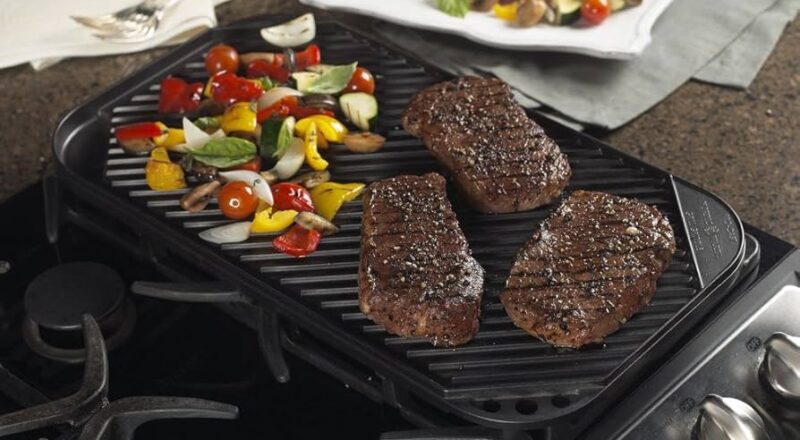For kitchen professionals and cooking enthusiasts alike, a reversible griddle is an essential tool. Its versatility makes it a favorite in many kitchens. But to get the best results, understanding the heat source recommendations for your reversible griddle is crucial.

Understanding Reversible Griddles
Reversible griddles are known for their dual-sided functionality, offering both a flat and ridged surface. This versatility allows chefs to prepare a wide variety of dishes, from pancakes to grilled steak. However, the performance of your griddle largely depends on the heat source you choose.
Why Heat Source Matters
The type of heat source not only affects cooking time but also impacts the texture and taste of food. Different materials react differently to various heat sources, so choosing the right one is essential for optimal results.
Types of Heat Sources
Gas Stoves
Gas stoves provide a consistent and adjustable flame, perfect for reversible griddles. They allow for quick temperature changes, making them ideal for recipes that require precision cooking.
Electric Stoves
Electric stoves offer even heat distribution, which is beneficial for griddles. However, they might take longer to heat up compared to gas.
Induction Cooktops
Induction cooktops are efficient and safe, using magnetic fields to heat the griddle directly. This method ensures quick and even heating.
Choosing the Right Griddle Material
Cast Iron Griddles
Cast iron is a popular choice due to its durability and excellent heat retention. It’s perfect for high-temperature cooking on both gas and electric stoves. For more information on caring for your cast iron, visit griddle care tips.
Non-Stick Griddles
Non-stick griddles are easier to clean and ideal for low-fat cooking. They work well on all types of heat sources but require careful handling to maintain the coating.
Tips for Optimal Cooking
Preheating the Griddle
Preheating is essential for achieving the right cooking temperature. Whether you’re using gas or electric, ensure your griddle is properly preheated before adding food.
Maintaining Even Heat
To prevent hot spots, keep your griddle centered over the heat source. For electric stoves, use a medium setting for consistent heat.
Using the Right Utensils
Using metal utensils can damage non-stick surfaces. Opt for silicone or wooden tools to prolong the life of your griddle.
Cleaning and Maintenance
Cleaning After Use
After cooking, allow your griddle to cool slightly before cleaning. Using hot water and a soft brush can help remove residues without damaging the surface.
Regular Seasoning
For cast iron griddles, regular seasoning is key to maintaining a non-stick surface. A light coat of oil after cleaning can keep the griddle in top condition.

Frequently Asked Questions
Can I use a reversible griddle on an open flame?
Yes, most cast iron griddles can be used on an open flame, but always check the manufacturer’s instructions for compatibility.
What is the best way to store a griddle?
Store your griddle in a dry place, preferably stacked with a protective layer between other cookware to prevent scratches.
How do I deal with food sticking to the griddle?
Ensure your griddle is adequately preheated and seasoned. Sticking often occurs with improper heating or insufficient oiling.
For more tips on cooking temperatures and griddle compatibility, check out cooking temperature guide and compatible stovetops.
For additional recipes and griddle uses, visit Blackstone Recipes.
Understanding and choosing the right heat source for your reversible griddle ensures delicious meals and prolongs the life of your kitchen equipment. Whether you’re a professional chef or a home cook, these tips will help you make the most of your griddle.
This article contains affiliate links. We may earn a commission at no extra cost to you.

